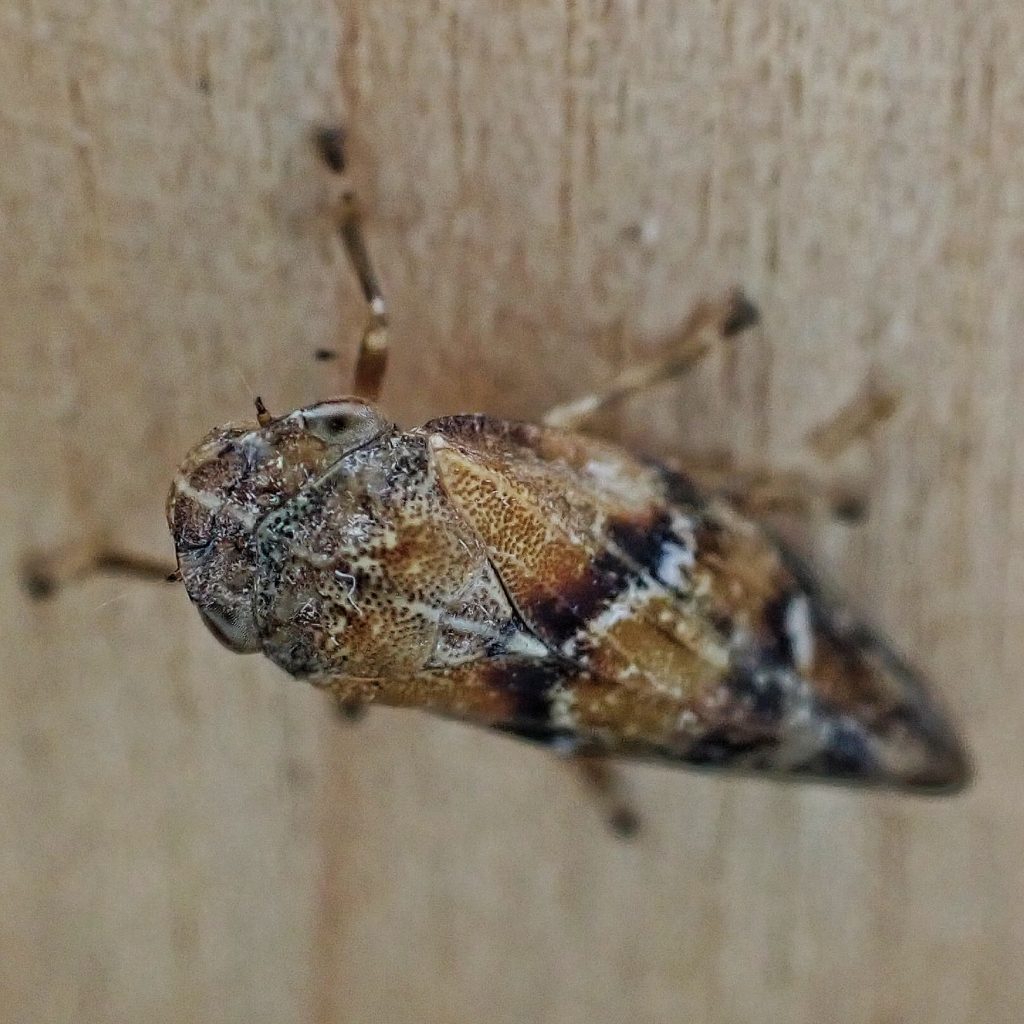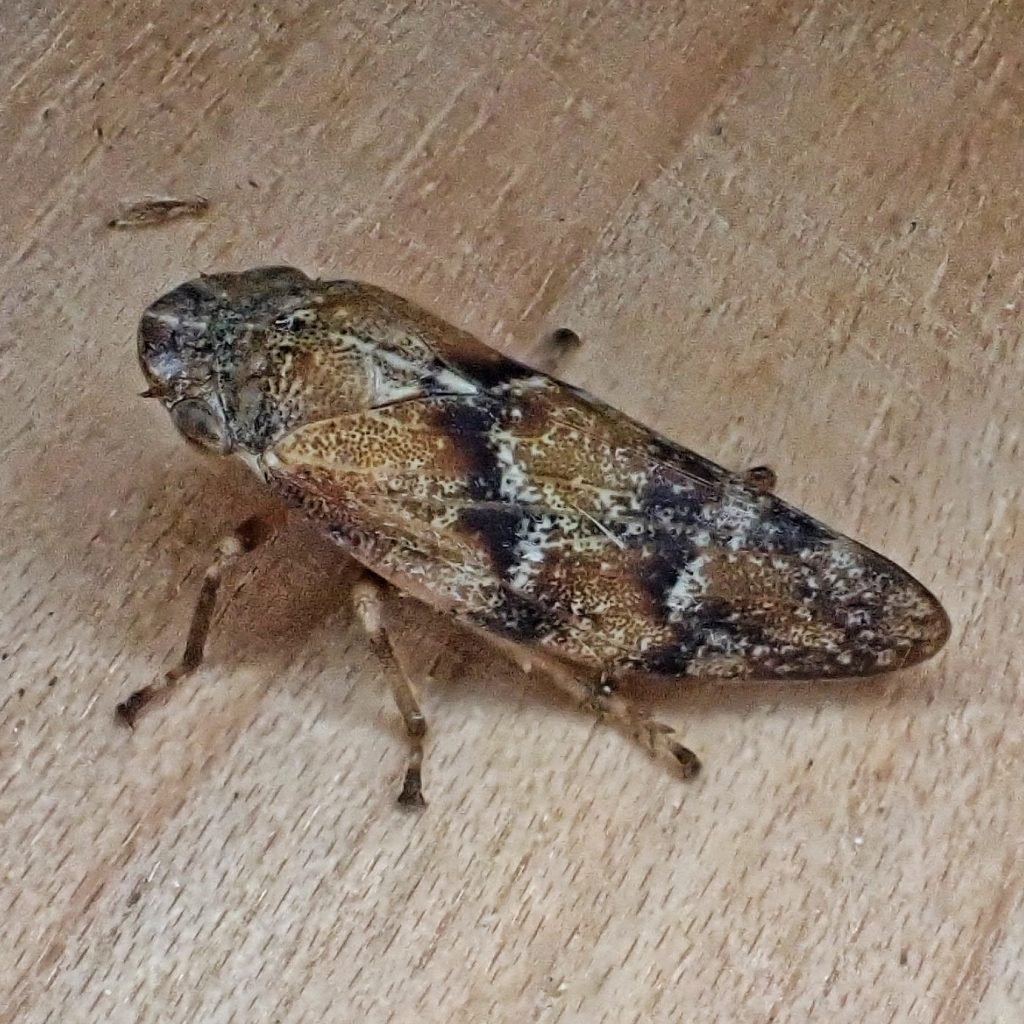
This spittlebug showed up at my lights when I was camping near a wet meadow in Skamania County, Washington. I got lucky that the coloring and heavily punctured wings led me directly to Aphrophora. It appears to be in the Aphrophora permutata complex, in the subgenus Plesiommata (based on the head being wider than the pronotum), and might be A. permutata (Douglas-fir Spittlebug) itself, though it seems possible, and even likely, that it is A. maculosa, since that species feeds on both pines and Doug-fir, and there was a good mixture of both in the area. It could also be A. fulva, since it is a pine specialist, as A. permutata is a Doug-fir specialist. Unfortunately, despite posing nicely for several portraits after a bout of refrigeration, the single specimen I collected suddenly became quite active, leaping from my photography stage, and disappearing into the recesses of my study. But there is no guarantee that I could’ve narrowed it down to species anyway, since positive identification requires examining male genitalia, and it probably doesn’t matter much to the average recreational naturalist, since what is known of the life histories of the three species are not that divergent. Almost all of the information in this profile came from the only decent resource I could access, “The Insects and Arachnids of Canada; Part 10: The Spittlebugs of Canada (Hamilton; 1982), although the information is generalized to spittlebugs as a whole, since not much is known for sure about the life history of members of Aphrophora.
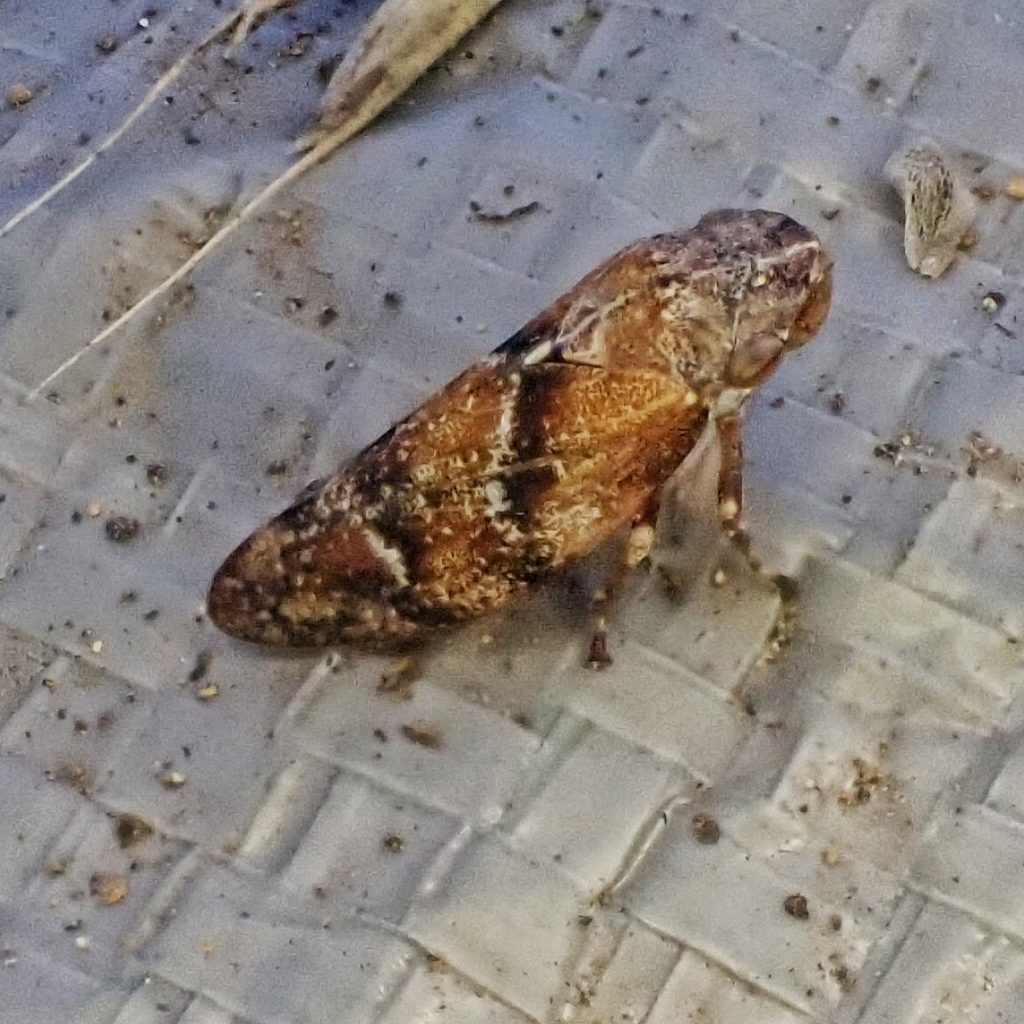
Hatchling spittlebugs do a good bit of exploring, even leaving their natal plant to find better pickings, before settling down at a feeding spot. They feed by inserting their beak into the plant and withdrawing sap. They have a bypass mechanism in their esophagus that allows them to take in more than they can digest, and the excess is excreted so that it soon covers the bug. They breathe by thrusting an air canal on their abdomen above the liquid material. At first bubbles in the liquid are but a byproduct of breathing, but by the second instar they actively produce bubbles to increase the surface area, doing so by repeatedly filling the air canal, and then forcibly expelling bubbles when it is brought back within the liquid, accompanied by vigorous movements of the abdomen. By mixing the bubbles with a sticky solution excreted by the abdomen, they prevent the bubbles from collapsing, and they can cover themselves in 15-30 minutes.
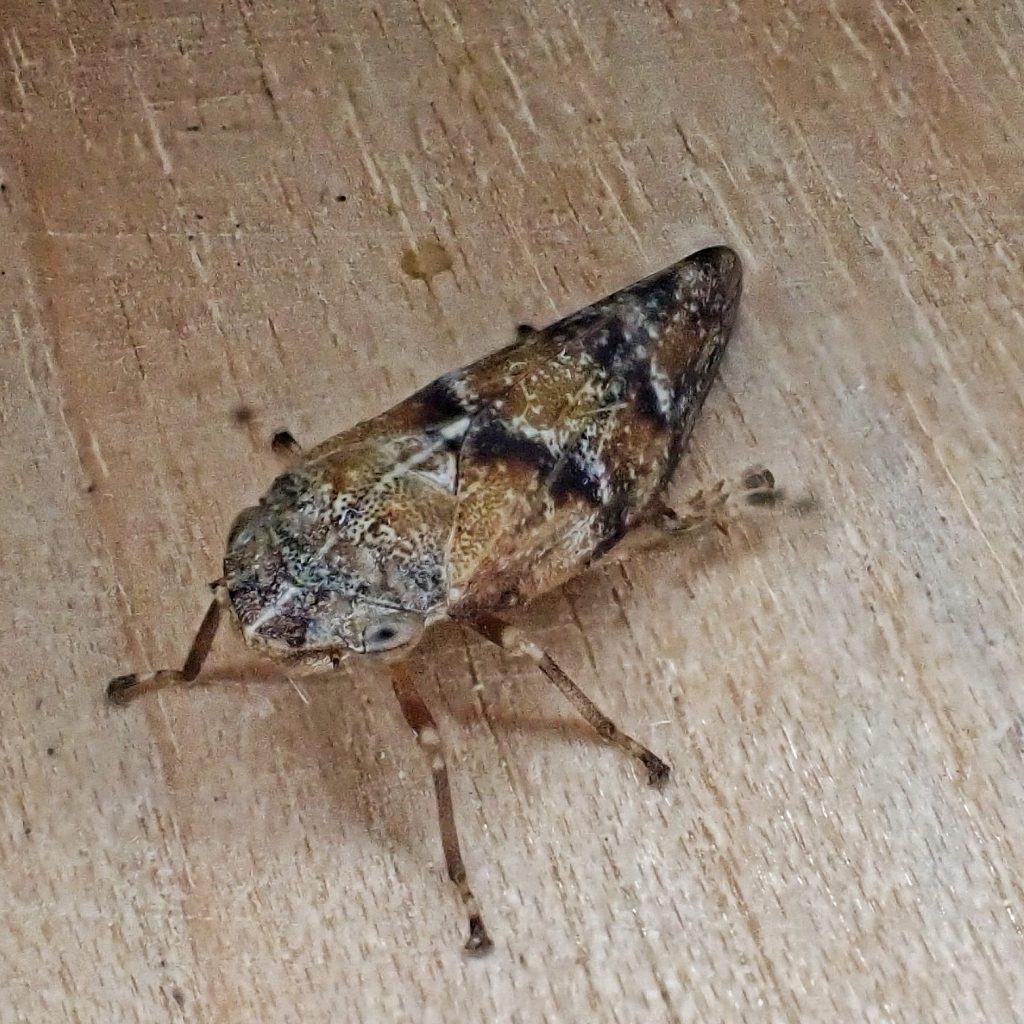
Spittlebug nymphs tend to be sedentary, and it can be difficult to get them to move, but once disturbed they will move about the host, groping at the air near the margins. “They have a comical appearance when out of their spittle mass. Their legs are long and they walk with their bodies lifted high in the air. Occasionally they extend their abdomen in the air at right angles to their body, first expanding and then contracting it in a telescopic manner; they do this even while they walk.” (Doering 1922- the quote was taken from Hamilton’s Spittlebugs of Canada, and Doering’s original paper is in German). If they fall to the ground they often die, since their sticky cover can glue them to a surface if it dries.
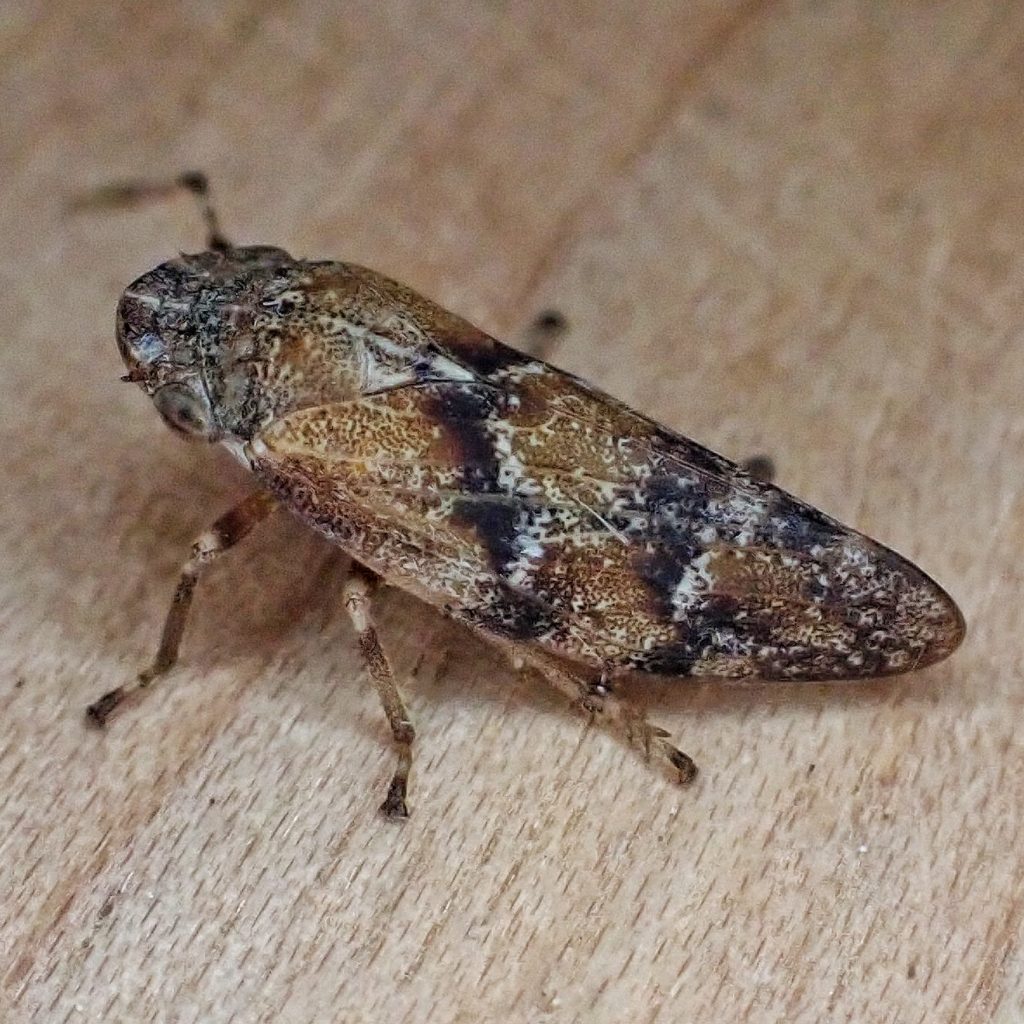
Nymphs tend to abandon a feeding station as soon as the abundance of sap declines, and they can be quite picky about finding their next feeding station. When they do settle down they immediately begin extruding sap and creating bubbles, using their legs to maneuver them into position to cover their bodies. They may also encounter the spittle masses of other nymphs, which they will enter and add their own bubbles to. Spittle masses have been found that are over a foot long, containing hundreds of nymphs. Nymphs also molt within the spittle masses, and older masses may contain dozens of shed exoskeletons.
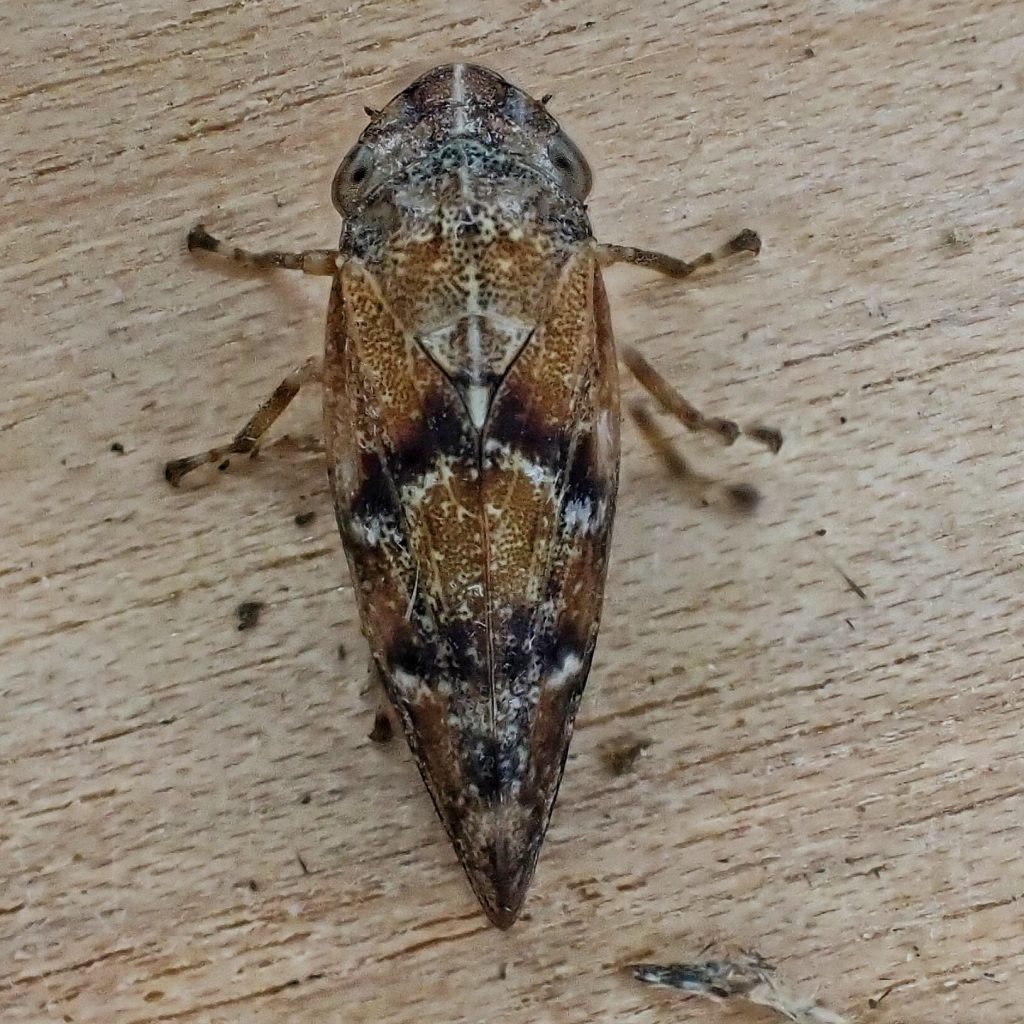
Description– Small (8-12mm) bugs that are mostly red or reddish brown, with (usually) angled, transverse black lines bordered in white; scutellum about as long as wide, and head slightly wider than pronotum; crown of head smooth; wings heavily punctured, more or less hairless; has only 2 spines along the length of the hind tibia, with a spiral of spines at the tip.
Similar species– A key (like the one contained here), and good magnification, are required to identify Aphrophora to species; members of the genus Clastoptera have scutellum much longer than wide; other spittlebugs in our region have ridges on the crown of their head separated by a groove; leafhoppers (Cicadellidae) have a row of spines on the hind tibia.
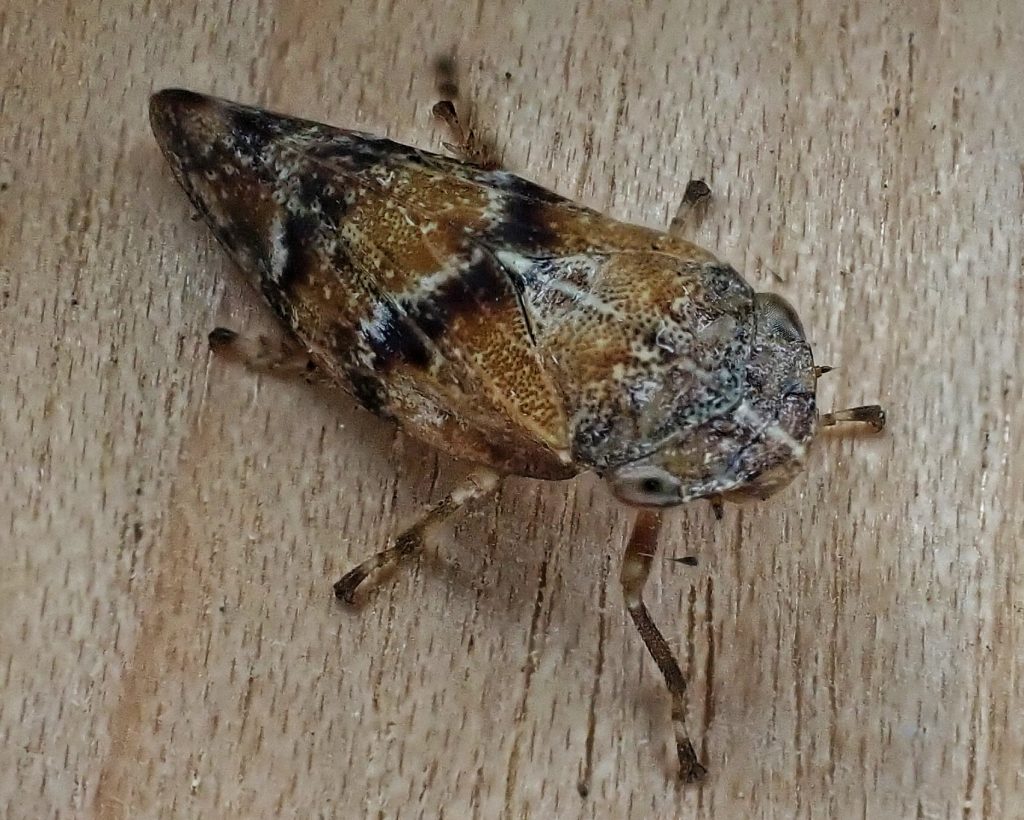
Habitat-Conifer and mixed conifer/hardwood forests containing their host species.
Range-The 3 species discussed here are found in western North America, and all three may be found region wide in appropriate habitat.
Eats-Larval hosts for A. fulva and A. maculosa are the stems and roots of lupines, asters, and a variety of other broadleaf plants, while the only larval records for A. permutata come from the leaves of elderberry (Sambucus spp.); adults feed on conifers, with A. permutata preferring Doug-fir, A. fulva preferring Pinus spp., and A. maculosa found on both.
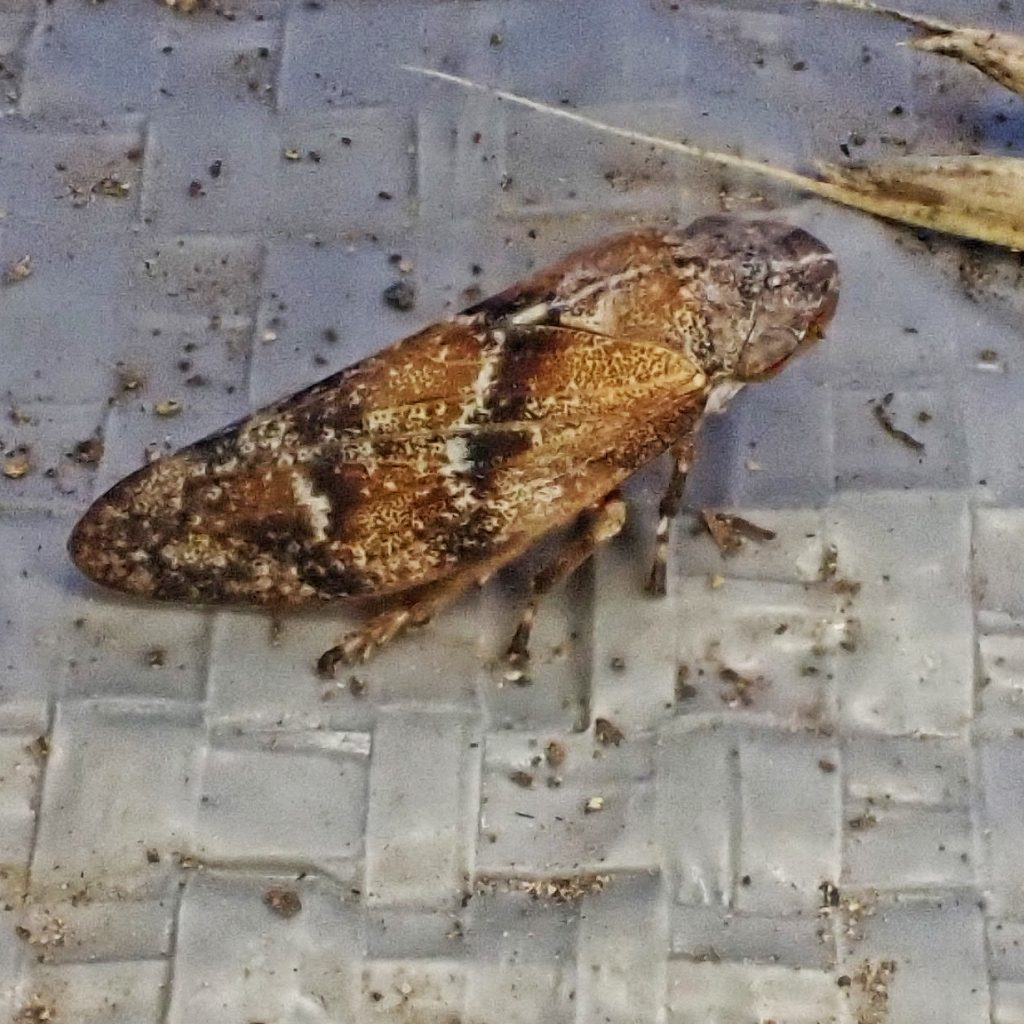
Eaten by– A variety of birds consume the adults; exposed nymphs are prey for members of Pentatomidae (shield bugs), Miridae (plant bugs), Reduviidae (assassin bugs), Sphecidae (solitary wasps), carnivorous Syrphidae (flower flies), and spiders and harvestmen; nymphs and eggs are parasitized by chalcidoid wasps; twisted-winged flies (Strepsiptera) parasitize the nymphs, and their triungulinid larvae actively seek out the spittle masses; bigheaded flies (Pipunculidae) and nematodes infest adults, entering the host during the nymphal stage; mites may be found on adults but they are merely phoretic, and fruit fly larvae (Drosophilidae) may be found in the spittle mass, but do not seem to feed on the spittlebug; adults may be infected with the fungus Entomophthora aphrophora.
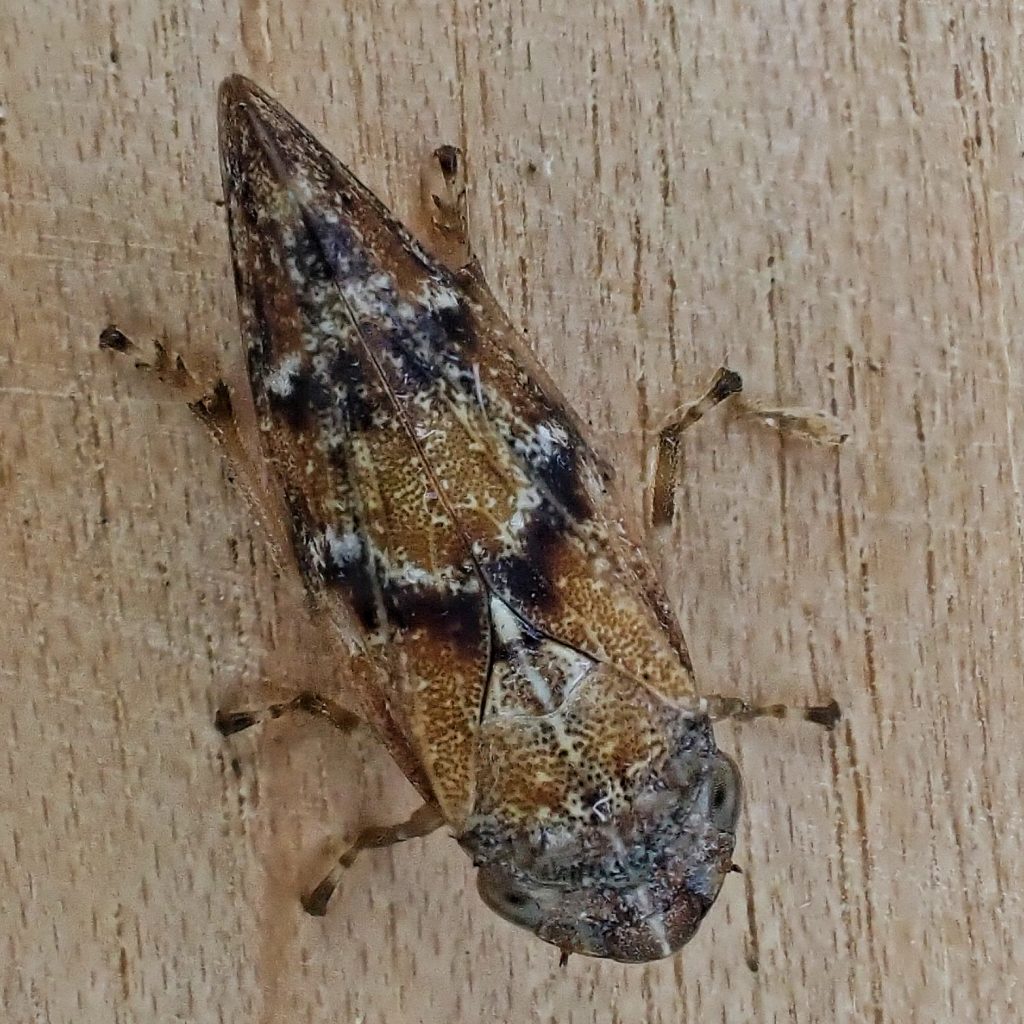
Adults active– May into October
Life cycle– It was not clear in my reading, and possibly it is unknown, whether eggs are deposited on larval hosts, or whether they are laid on the tree on which the adults feed, and the nymphs make their way to a suitable host once they’ve hatched; up 35 eggs are laid, usually in the fall, but sometimes in mid-summer, and occasionally gravid females will overwinter in diapause and lay eggs in the early spring; eggs are inserted into plant tissue of the larval host via longitudinal slits made by the sharp ovipositor; eggs are encased in a hardening substance, through which the larvae tears with a sharp plate (egg burster); nymphs usually undergo five instars, and the process takes 1-3 months, depending on weather and feeding conditions; adults may live 6 months or more.
Etymology of names– Aphrophora is from the Greek words for ‘foam bearing’, referring to the foamy nests in which spittlebug nymphs live. The subgenus epithet Plesiommata is from the Greek words for ‘close set ocelli’, which is a distinguishing trait of this subgenus. The specific epithets permutata, maculosa, and fulva are all from Latin, and mean, respectively, ‘completely changed’, ‘spotted’, and ‘reddish yellow’. Since all of them could refer to many species in Aphrophora I can’t even guess to what they refer.
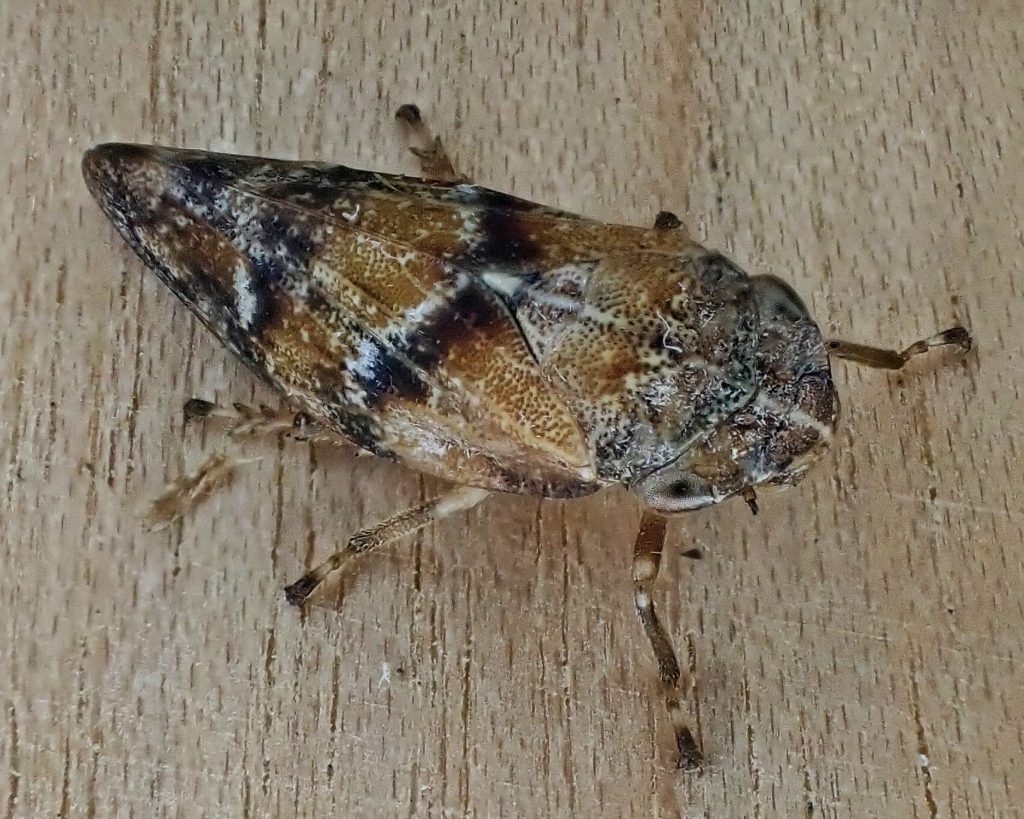
https://esc-sec.ca/wp/wp-content/uploads/2017/03/AAFC_insects_and_arachnids_part_10.pdf
Genus Aphrophora – BugGuide.Net
Subgenus Plesiommata – BugGuide.Net
